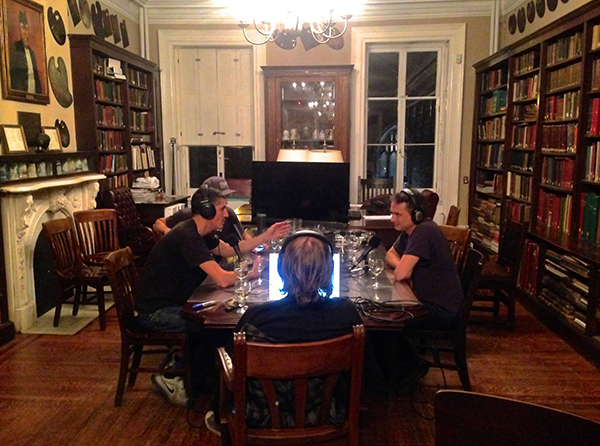While in New York last month I did an interview with Tony Curanaj and Ted Minoff at the Salmagundi Art Club for their podcast series Suggested Donation. You can hear the interview on their blog here, or via iTunes.
It was the first time I’ve given such a long interview and I didn’t really prepare much for it due to time constraints with work and family in NYC. Thus, I was something of a deer in headlights in front of the mic and didn’t really get to flesh out some of the points I was making. I thought I would elaborate on them a bit here.
First, on Hardy Hanson at UCSC. One of the things I forgot to mention is that he would say to us over and over again to never stop improving. His idea (mantra almost) was that as we lay in our deathbeds painting a still life from the bed, our very last brushstroke should be the best brushstroke we’ve ever made. It’s something that has stayed with me all these years. Hardy Hanson passed away in 2012 and I remember wondering then about his last brushstroke. He was a great teacher and I’m very thankful for everything he gave me.
I think I only cleaned the toilets once at Charles H. Cecil studios. I’m really the last person you want in charge of keeping anything clean.
In the discussion about pigments, the alchemical idea of using four colors in figure painting is based on creation myths from various cultures. These stories describe the creation of man as occurring when god gathers four dusts from the four corners of the earth and mixes them with some elixir to give life. The dusts are red, yellow, black and white. It’s discussed in the Pirke de-Rabbi Eliezer (a Jewish exegesis of Genesis), and some Native American tribes had similar myths. It’s not that I think painters are gods when creating paintings, I just thought it was interesting that people around the world assumed god used the same four colors. The fact that the limited palette actually requires glazing with alizarin could be seen as a sign of humility. The medium would be the elixir.
The squat in Paris where I worked was called Pôle Pi. There is a film on Youtube which documents a bit of it. I’m visible in the area where I worked for a second around the 43rd minute. It was a beautiful space, the poor quality of the film doesn’t really do it justice.
Discussing the Russian painters we met in St. Petersburg, I mention Evgeny Grouzdev, you can see some of his portraits here. The Burmese artist, Maung Thiha, I wrote about back in 2009.
The museums with large Russian Socialist Realism collections in the US are the Springville Museum of Art in Utah and the Museum of Russian Art in Minneapolis.
You can pick up Nick Beer’s sight-size book on Amazon.
I’ll do a blog post later on the great Italian 19th-century painters. In the meantime some names to look at are (in the order in which they appear in the bookshelf next to my computer): Francesco Lojacono, Ettore Tito, Luigi Nono, Giuseppe de Nittis, Antonio Mancini, Guglielmo Ciardi, Emma Ciardi, Domenico Morelli, and Telemaco Signorini.

Thanks for posting this… I dropped my membership because Salmugundi seemed to be a dead dinosaur with a mandatory dining room fee. Maybe there is hope for them after all.
Marc, thank you for expanding on some thoughts unheard during your time at the mic.